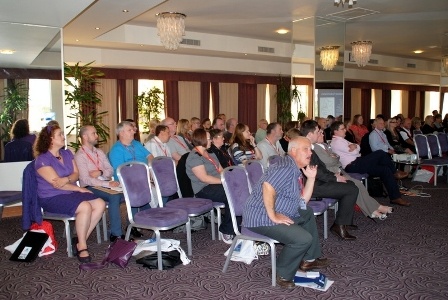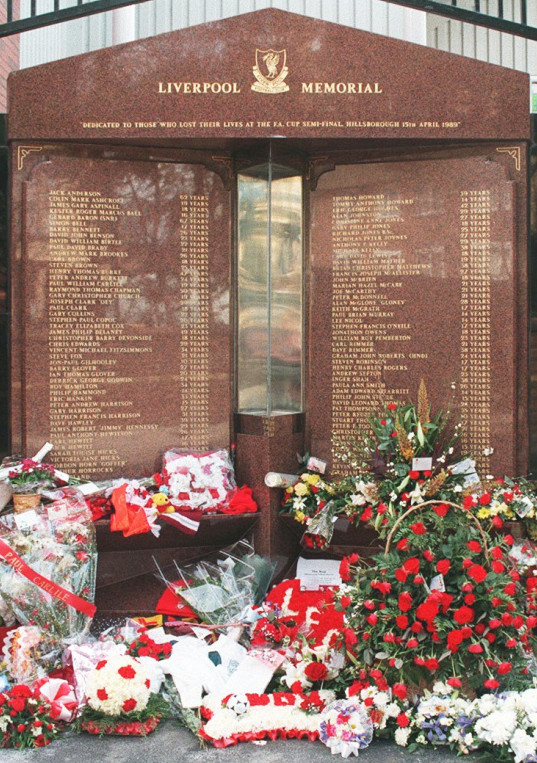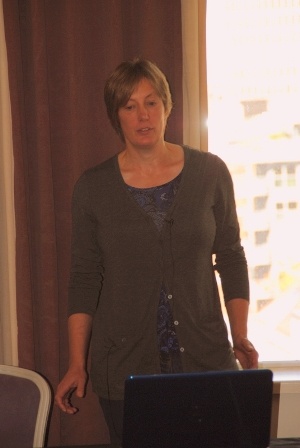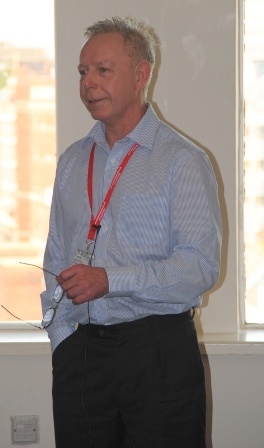News
AAPT Conference 2012 report
Report by John Pitchers FAAPT, Vice-Chair
The 8th Annual AAPT conference was held in Bristol for the first time, at the Mercure Holland House Hotel on Saturday 22nd September 2012.
Once the delegates had been registered, given their conference bags and been loaded up with preparatory caffeine, it was time to hand to David Scott, Chair of the morning session to guide us through the first part of the day.
The programme got underway with what had been advertised as a ‘welcome from James Lowell, AAPT Chair’, but was, in fact, a ‘welcome from Ishbel Gall, AAPT Chair-Elect’ as, due to the impending patter of tiny Lowell feet, James reluctantly, but wisely elected to remain in London.
Removal of Tissue at Post Mortem
First up was Caroline Browne, Head of Regulation at the Human Tissue Authority, who delivered a relevant and informative presentation regarding the ‘Removal of Tissue at Post Mortem’. This talk was presented in a logical way beginning with the legislative background and scheduled purposes of the HT Act, consent and licensing information, and then taking us through each of the possible scenarios involving the removal of tissue and their specific issues.
Of particular interest, was the information on some of the ‘grey areas’ of tissue retention, such as genetic analysis, keepsakes, and testing after needlestick injury, which are not encountered frequently and can be problematic in terms of consent, given that the need to retain such specimens usually only becomes apparent at short notice, often during procedures.
The talk underlined the fact that the best course of action, if unsure, is to contact the HTA for advice and guidance.

The lecture theatre at the Mercure
Disasters: remembering and change
On next was Lucy Easthope, Teaching Fellow at the University of Bath, with a talk entitled ‘Disasters, Remembering and Change’.
This was a very dynamic and interesting talk, delivered in an engaging way, on the subject of mass fatality and DVI, but exploring themes and aspects that are a world away from the standard gory-picture-and-battle-story manner in which this subject is more commonly tackled.
Lucy has a wide ranging experience, both in the academic world, and in the more technocratic environment of resilience planning, so is able to put across a pragmatic point of view, but one which is mindful that there are real individuals involved at the heart of these incidents, and that what we do as professionals, although usually ‘hidden’, can deeply affect them – given that DVI is usually all about protocols and standardisation of process, this is an aspect that can be easily overlooked.
There was a strong message that communicating (and I don’t mean the need for bigger radios during incidents) why we do things in a certain way and why the process takes the time it does is key to managing the inevitable tensions between families, media and responders that a disaster can create - which was reinforced by the position taken by groups such as Disaster Action (http://www.disasteraction.org.uk), who call for a ‘rights-based approach’ to disaster management and to recognise that we, as ‘agents of the state’ hold all of the power.
Although a range of legislation touches on various aspects of the subject (Human Tissue Act, Civil Contingencies Act, etc.), the rights that groups like Disaster Action talk about (the right to information, the right to communication, the right to communication before the media, the right to view the deceased, the right to personal effects, etc.) are not guaranteed in law – neither does the Human Rights Act guarantee protection for families after disaster. All of which means that, if we feel the rights of the families are important, then we, as practitioners and contributors to planning, must ensure these rights are protected in terms of our ‘best practice’, of which we are the guardians.
I’m sure I’m doing Lucy a disservice – there were many more aspects to her presentation that I don’t have the room to cover here, but one point of advice given was for anyone involved in public service or agency to read the recently released report of the Hillsborough Independent Panel, which is highly relevant to any work in which we may be involved in the future. The report may be found by following the link below:
https://s3.amazonaws.com/s3.documentcloud.org/documents/427806/hip-report.pdf

Memorial at Anfield, Liverpool FC
Ishbel Gall on a busy year for the AAPT
After a break for more coffee and a chance to look around the trade stands, the day continued with a ‘Review of the Last 12 Months’, delivered by Ishbel Gall.
Given that the AAPT has been involved in such a range of activity over the last 12 months, this was a welcome and informative presentation.
Ishbel took a chronological approach to the topic, listing developments month by month throughout the period.
Achievements included:
• Contributing to a chapter in a new Histopathology textbook
• Contributing to review of ‘Safe Working and the Prevention of Infection in the Mortuary and Post Mortem Room’ – the ‘yellow book’
• Contributing to significant new work on bereavement in conjunction with several partner organisations
• An APT and AAPT Council Member receiving an MBE.
Work on trying to fit APTs into the scope of the Modernising Scientific Careers project continued to be challenging, however, there has been significant progress, with recognition that APTs are ‘different’, and the setting up of an MSC APT Curriculum Steering Group to discuss the issue with various stakeholders (also, see below).
Continuing to put the case for registration
Ishbel touched on the situation regarding what’s next for registration – the situation has become complicated by the fact that, although the Council for Healthcare Regulation and Excellence (who are soon to be renamed the Professional Standards Authority for Health and Social Care) are in talks with VRC regarding the launch of a new accreditation scheme for voluntary registers, the Academy for Healthcare Science has now been launched, and is separately promoting ‘registration for all’. Inevitably, politics makes the situation somewhat ‘fluid’, and how this will work out in real terms for the profession is not yet clear, but the AAPT continues to put the case strongly for registration and will continue to ensure APTs are represented in issues that affect them.
Membership Survey and proposed new qualifications
Ishbel then presented the results of the recent member survey, which had a very good response rate of >50%. The top three priorities that the membership would like Council to focus on are education and training, best practice, and regulation.
These answers and the detailed comments received during the survey will inform and guide the strategic direction of Council over the next 12 months.
Finally, the situation regarding the proposed new qualifications was discussed – The RSPH are working with AAPT to provide two new qualifications and Chester University are to provide the BSc enabling us to fit in with MSC at three distinct levels of qualification. Once this is complete, there will hopefully be an Agenda for Change review across the profession, with the potential for the standard band 3,4 & 5 profiles to be replaced.
Before closing, Ishbel thanked Professor Lucas for his commitment and support to the APT profession throughout his time as AAPT President, and extended a warm welcome to his successor, Dr. Michael Osborn of St. Mary’s Hospital, London.
Operational Military Fatalities
Next on the programme was Dr. Russell Delaney, a Home Office Registered Forensic Pathologist with the South-West Group Practice, who gave a very interesting run-through of the ‘Investigation of Operational Military Fatalities’.
Dr. Delaney performs examinations on the majority of British Service Personnel who die in-theatre and are subsequently repatriated, via RAF Brize Norton, to the John Radcliffe Hospital in Oxford, and this experience was evident in the way the presentation was delivered.
In common with some of today’s other talks, Dr Delaney took a slightly different look at the subject concentrating, not narrowly on the effects of gunshot and blast injury, but on the wider issues including how the deaths are investigated by the Royal Military Police and his role in documenting the pathology with CT scanning and autopsy.
One of the most impressive areas was how the results are used to feed information back to theatre for the improvement of future techniques and procedures (and to assist the medics from a psychological point of view), how the results feed into civilian trauma care (there are several pieces of equipment that started out as military use only, but have now been incorporated into the standard civilian kit), and how the results directly influence the design and development of new equipment – work that will have a massively beneficial impact on the safety of service Personnel in the future.
This was a refreshingly down to earth talk, which managed to be interesting whilst avoiding being sensationalist with the subject matter.
After a tasty lunch and another look around the trade stands, the afternoon session commenced, expertly chaired by John Prior.
A new technique for embalming
The first speaker of the afternoon was Dr Roos Eisma with ‘Thiel Embalming, the Future of Anatomy in Dundee’.

Dr. Eisma presented a compelling and factual account of the potential for Thiel Soft-Fix Embalming to replace current methods of fixation in the anatomy sector.
The drawbacks of traditional formalin-based embalming are well known, from the toxic and corrosive properties of the chemicals, to the discoloured and leather-like nature of formalin fixed tissue.
Thiel embalming involves initial arterial and venous perfusion of a fluid based on water, glycol, boric acid, ammonium nitrate, potassium nitrate, sodium sulphite, alcohol, morpholine, and low levels of formalin and chlorocresol; followed by maturation and storage submerged in a tank of fluid.
The technique is suitable for long term storage, and has the benefits of excellent biocidal properties and low exposure to harmful chemicals.
Perhaps one of the more unexpected and interesting aspects of Dr. Eisma’s talk was the fact that, following this technique, the natural colours and flexibility, along with the tissue planes of the deceased, are preserved. This enables the deceased to be used for training in surgical, diagnostic and interventional procedures; and as a model for the research and development of new medical devices and techniques.
Examples of this include:
• Laparoscopy
• Renal angiogram
• Ventilation
• Ultrasound-guided regional anaesthesia
• Bronchoscopy
• Anatomical dissection
Perhaps the days of using formalin for the preservation of post mortem tissue are well and truly numbered, a development that those of us who regularly use it could only see as positive!
BAFTA Award winning “Mummifying Alan”
Up next were Dr. Stephen Buckley, Dept. of Archaeology, University of York; and Maxine Coe, Senior APT, Sheffield Medico-Legal Centre with the fascinating story of ‘Mummifying Alan’.
This was a novel and well delivered talk describing how, with the intention of overturning the received wisdom of the preservation process, a groundbreaking piece of experimental scientific research was achieved by a Forensic Archaeologist, an APT, a Forensic Pathologist, and an Egyptologist; along with Mr. Alan Billis.
Alan answered an advertisement asking for volunteers with a terminal illness to be preserved, after death, using one of the methods of mummification being suggested by researchers, and it was very humbling to hear how this man took the step of applying for no other reason, really, than to be of use after his death and to assist in the advancement of knowledge.
The professionals who took part in the climax of this project (the origins of the research date back to 2003) were obviously committed to ensuring that Alan’s dignity was preserved, and it was pleasing to see an APT in such a prominent role.
The success of the project was a suitably impressive end to an eight year journey of knowledge and understanding, made possible by the support of television, the commitment and dedication of the experts, and the extraordinary generosity of one man.
Insight into a perinatal service
Next on the programme were Sarah Davis, Deputy Mortuary Manager and Debby Foster, Senior APT; both from Birmingham Women’s Hospital.
Their talk was entitled ‘Insight into a Perinatal Service’.
Both Sarah and Debby approached the subject with respect, but ensured the mood was kept light with some well-placed humour.
Equal footing with other healthcare science professionals
This presentation was important in a number of ways – it was presented by APTs, it was completely relevant to APTs, and it truly reinforced the message that APTs deserve an equal footing with other healthcare science professions – they are competent, knowledgeable and passionate about the service they provide to the bereaved.
The stated aim of the talk was to show what a dedicated Perinatal pathology service consists of; this was tackled in a thorough manner and included sections on area covered, age / gestational ranges, and post mortem techniques, followed by a good range of case studies.
Perinatal pathology involves many different considerations than adult pathology, and it would have been a valuable learning experience for those APTs who aren’t involved in these type of examinations (and those of us who haven’t for many years and are at risk of forgetting the finer points).
The History of the APT
The final talk on the programme was Barry Knight, a semi-retired APT who acts as the AAPT Honorary Archivist, with a talk entitled ’50 Year History of the APT’.

Mr Barry Knight FAAPT
Barry presented a talk packed with facts and anecdotes from the last five decades, highlighting very well the sheer number of hours he has spent researching the subject online and at the National Archive at Kew.
The main focus of the presentation was how Dr. James Ferguson Heggie decided early on that staff involved in mortuary work should be properly trained and recognised, subsequently taking this cause to the Government, and starting APTs down the road to the profession we are today; including being almost wholly responsible for setting up and providing courses and examinations for the Diploma and Certificate qualifications in Mortuary Hygiene and Technology under the
auspices of the Council of the Royal Institute of Public Health and Hygiene.
It was interesting and gratifying to see that Barry had managed to obtain significant amounts of the actual correspondence between Dr. Heggie and various health bodies, Government departments, journals and newspapers, etc., which gave a depth and context to the subject, and again illustrated the breadth of the historical research.
Our debt to Dr James Ferguson Heggie
We clearly owe a lot to Dr. Heggie, and it was fitting that his efforts on behalf of the profession should be commemorated 22 years after his death, with such a factual and heartfelt presentation.
History is always important, as it reminds us where we’ve come from so that we may better shape our future – I know that Barry has several other presentations on Mortuary and bereavement-related history, and I look forward to him sharing these in the future.
Many thanks, as always, to the support of our trade attendees, and to Mopec and LEEC in particular for sponsoring certain aspects of the social programme.
Thanks also to all of the APTs who attended this year’s conference, and I hope to see you all in 2013!
